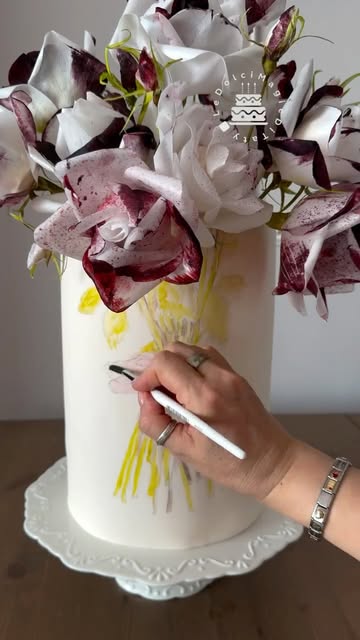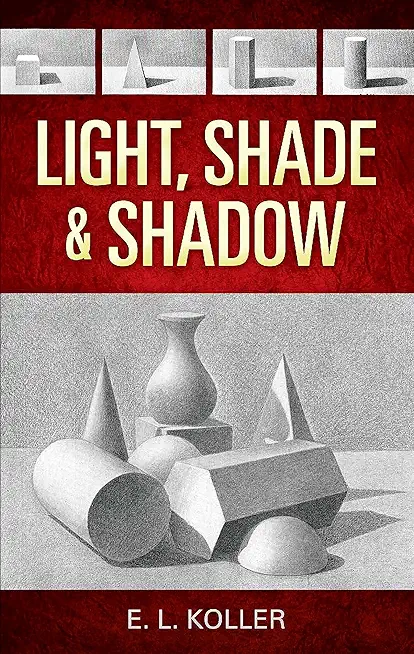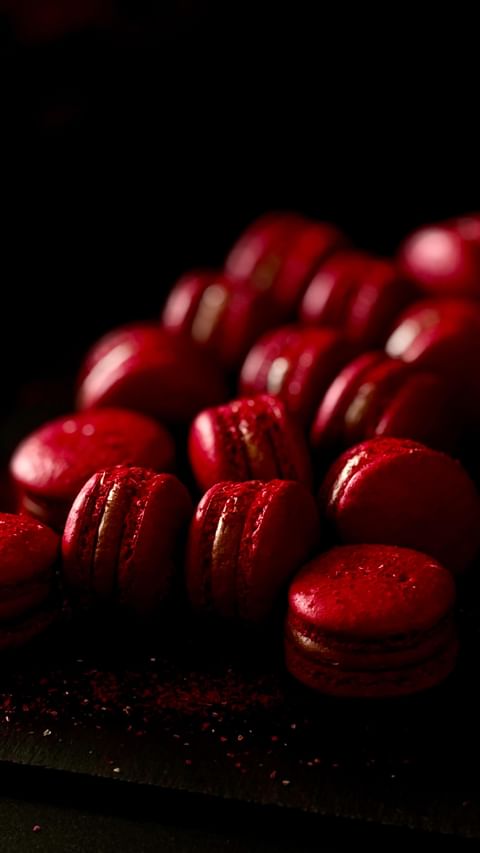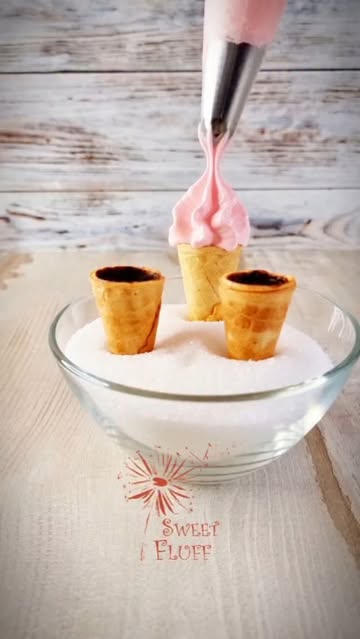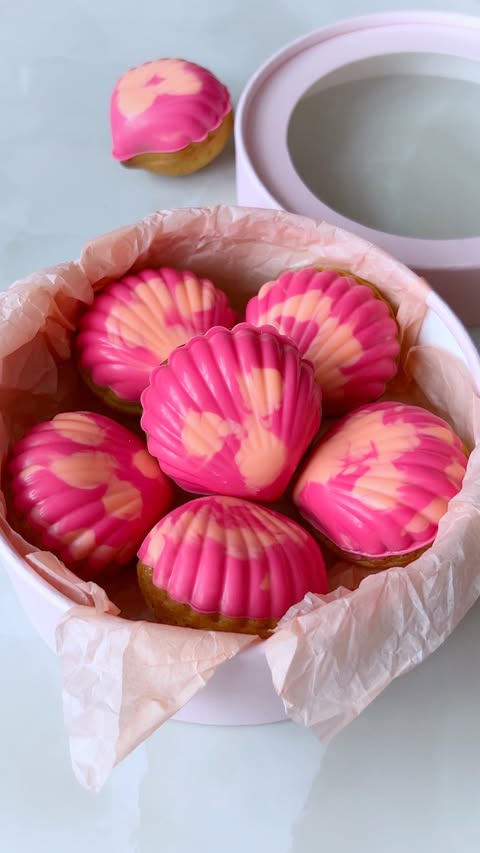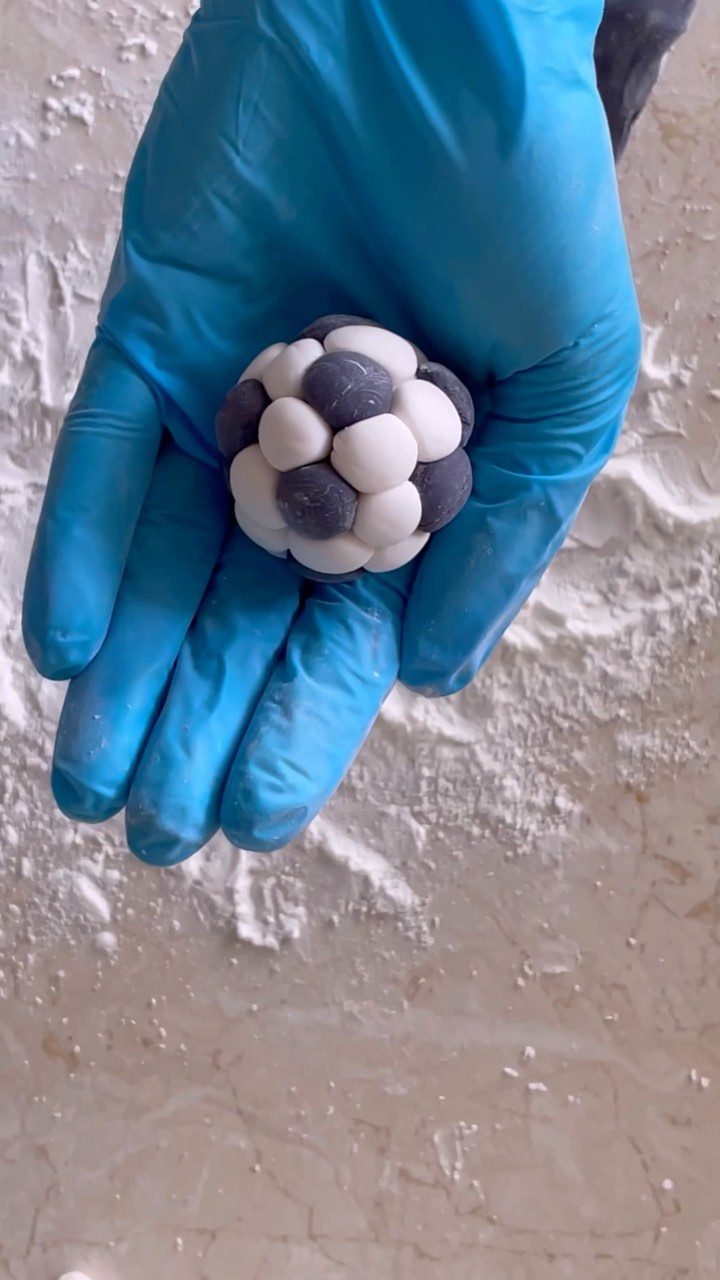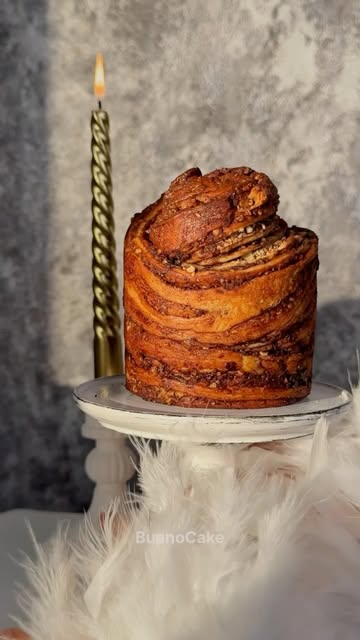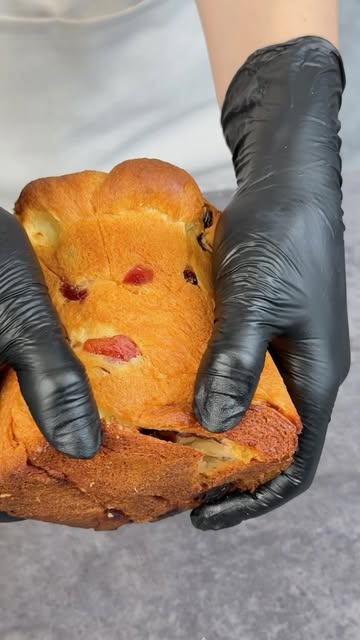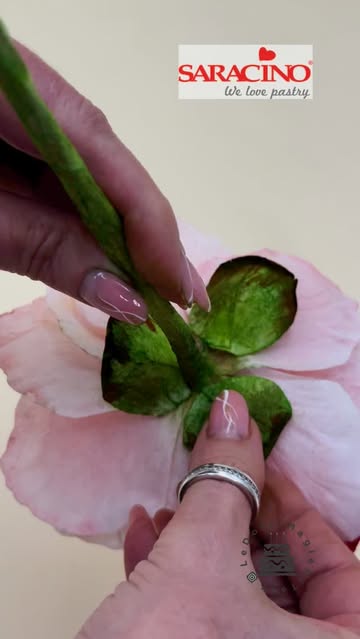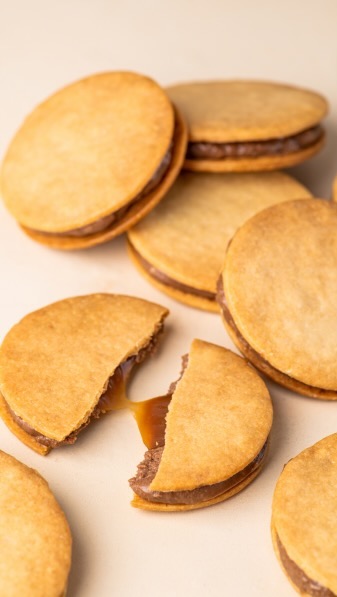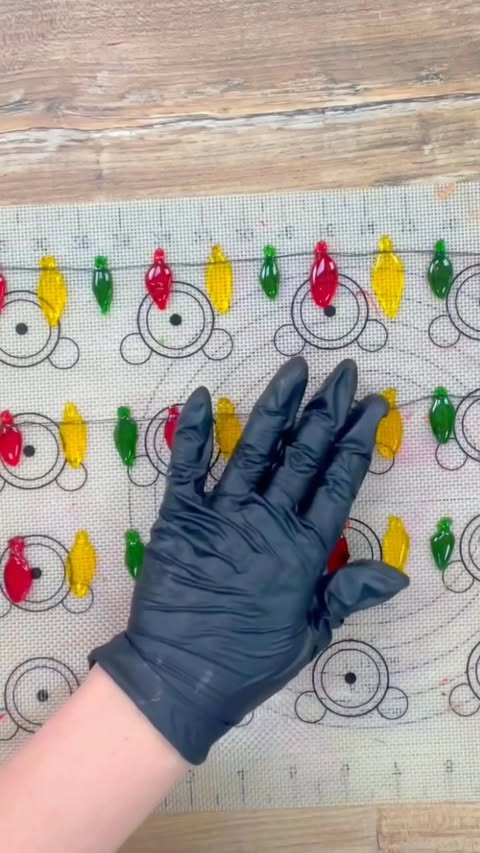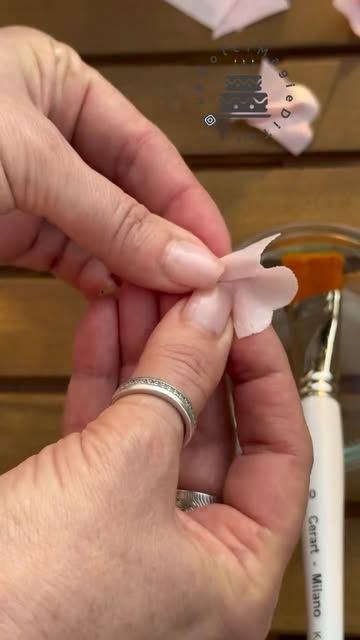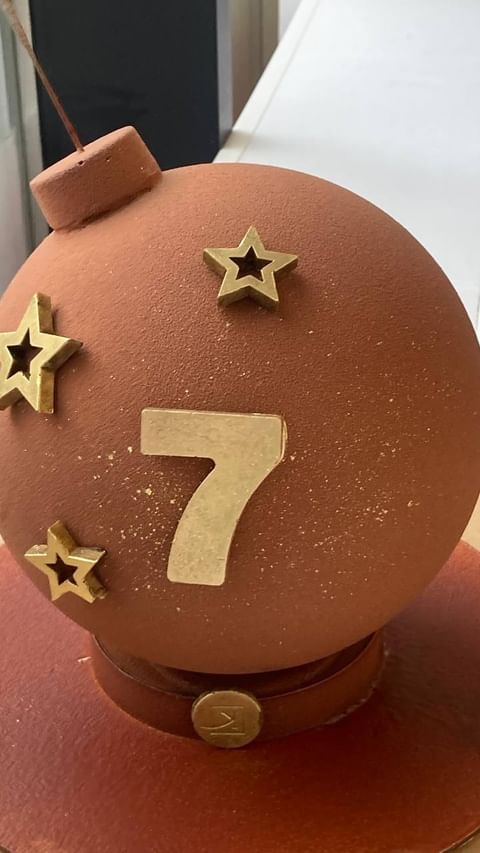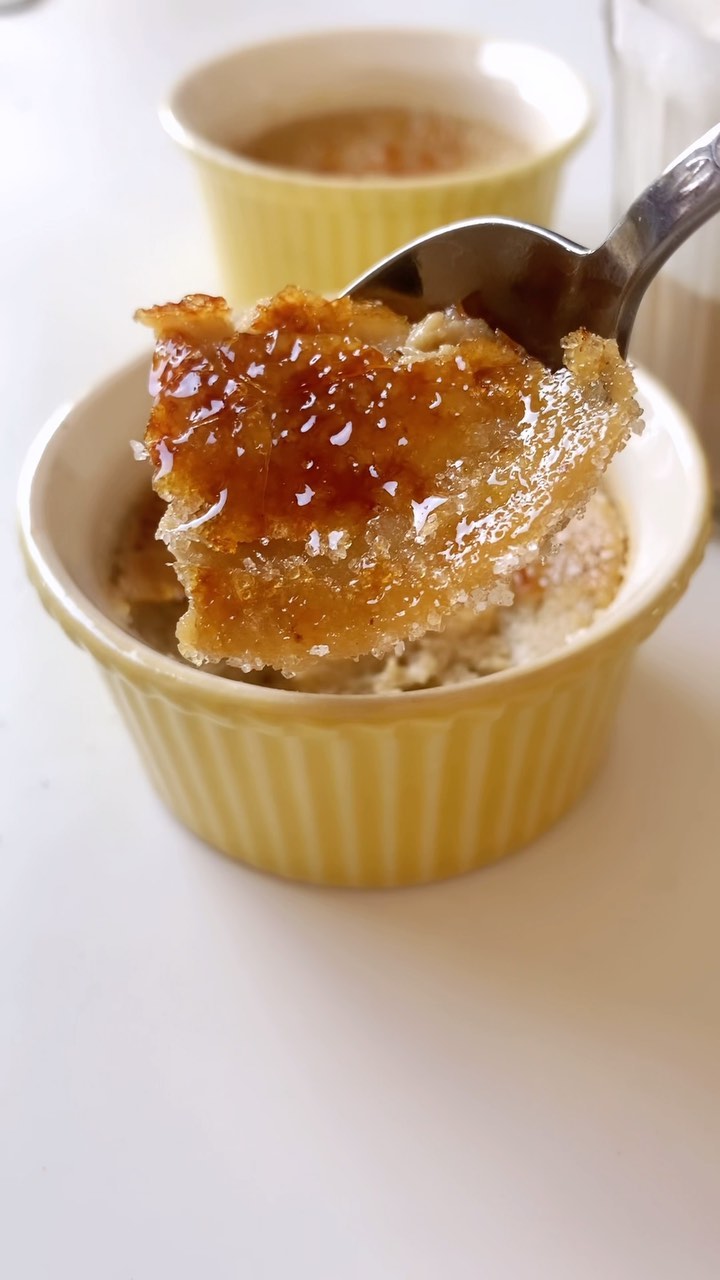Ingredients
Color Palette
![Chefmaster Liqua-Gel Food Color, 10.5-Ounce, Lemon Yellow [labeling may vary] Chefmaster Liqua-Gel Food Color, 10.5-Ounce, Lemon Yellow [labeling may vary]](https://1mincake.azureedge.net/affiliate/B0025U5LIE.jpg) Chefmaster Liqua-Gel Food Color, 10.5-Ounce, Lemon Yellow [labeling may vary]
$12.03
View details
Prime
Chefmaster Liqua-Gel Food Color, 10.5-Ounce, Lemon Yellow [labeling may vary]
$12.03
View details
Prime
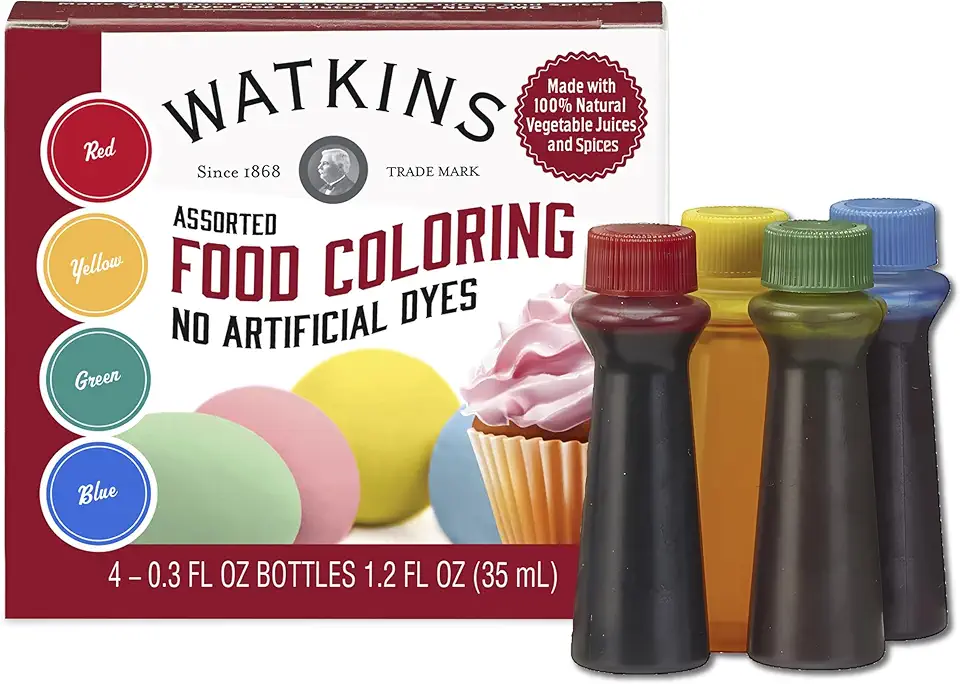 Watkins Assorted Food Coloring, 1 Each Red, Yellow, Green, Blue, Total Four .3 oz bottles
$6.99
$12.99
View details
Prime
Watkins Assorted Food Coloring, 1 Each Red, Yellow, Green, Blue, Total Four .3 oz bottles
$6.99
$12.99
View details
Prime
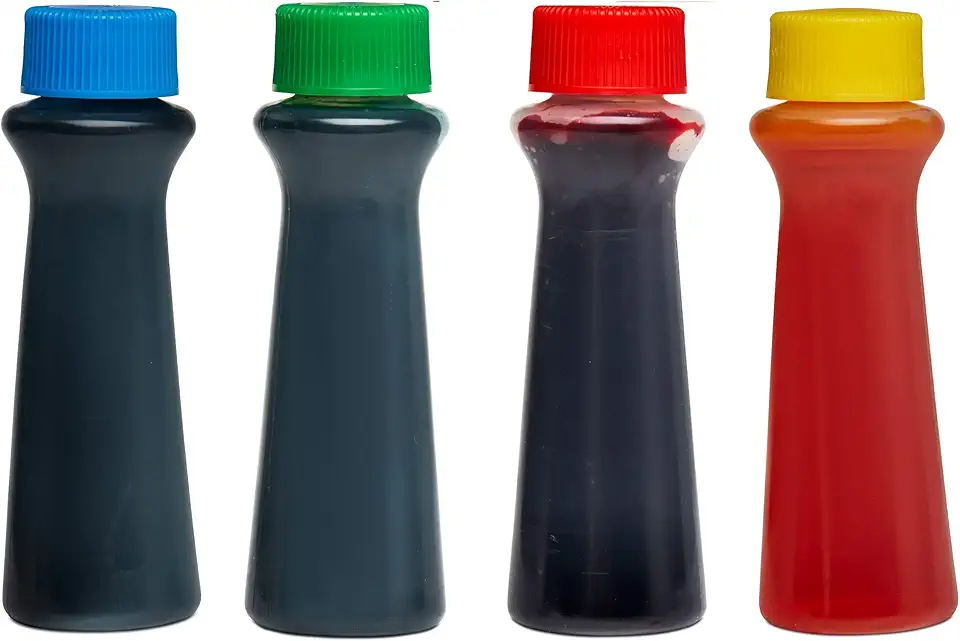 Spice Supreme Assorted Food Colors Red Blue Green Yellow - 4 Color Cake Liquid Variety Kit for Baking , Decorating ,Fondant , Cooking, and Slime Making - .30 fl. oz.Bottles
$5.62
View details
Spice Supreme Assorted Food Colors Red Blue Green Yellow - 4 Color Cake Liquid Variety Kit for Baking , Decorating ,Fondant , Cooking, and Slime Making - .30 fl. oz.Bottles
$5.62
View details
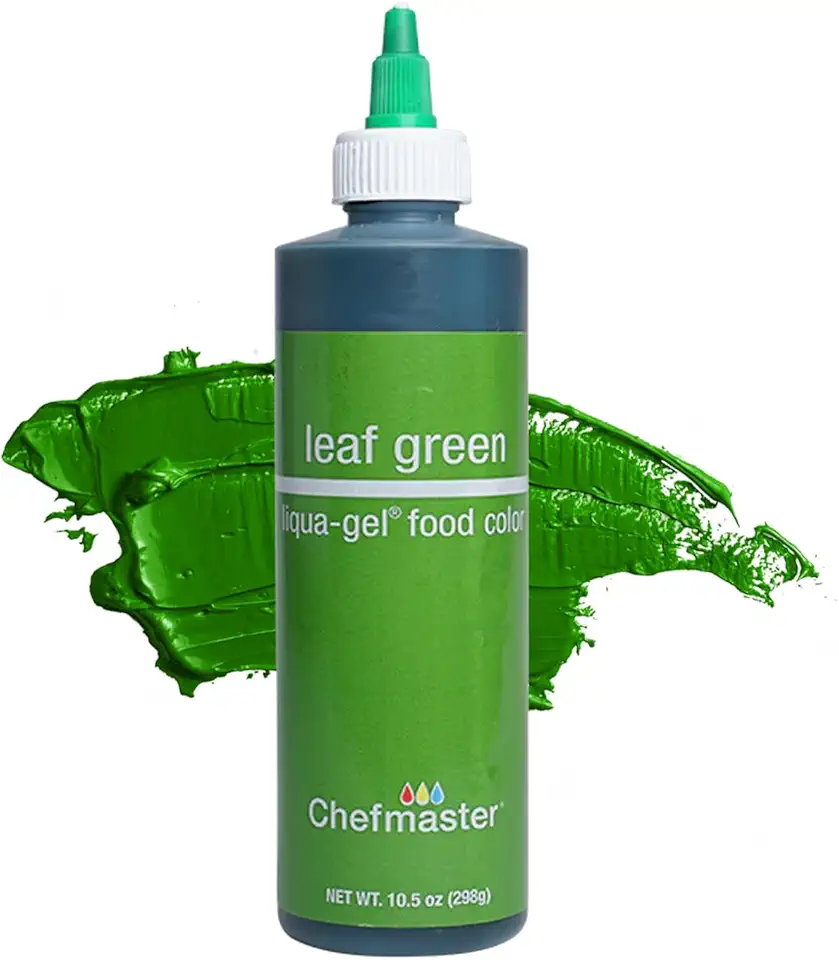 Chefmaster Leaf Green Liqua-Gel® Food Coloring | Vibrant Color | Professional-Grade Dye for Icing, Frosting, Fondant | Baking & Decorating | Fade-Resistant | Easy-to-Use | Made in USA | 10.5 oz
$14.50
View details
best seller
Chefmaster Leaf Green Liqua-Gel® Food Coloring | Vibrant Color | Professional-Grade Dye for Icing, Frosting, Fondant | Baking & Decorating | Fade-Resistant | Easy-to-Use | Made in USA | 10.5 oz
$14.50
View details
best seller
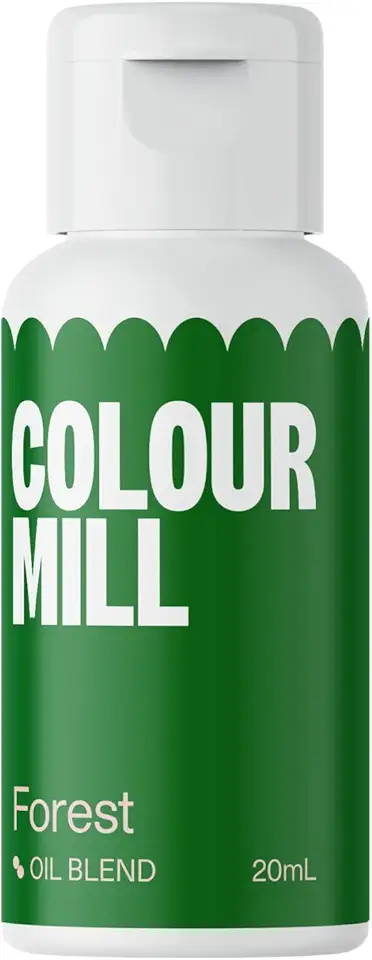 Colour Mill Oil-Based Food Coloring, 20 Milliliters Forest
$9.99
View details
Colour Mill Oil-Based Food Coloring, 20 Milliliters Forest
$9.99
View details
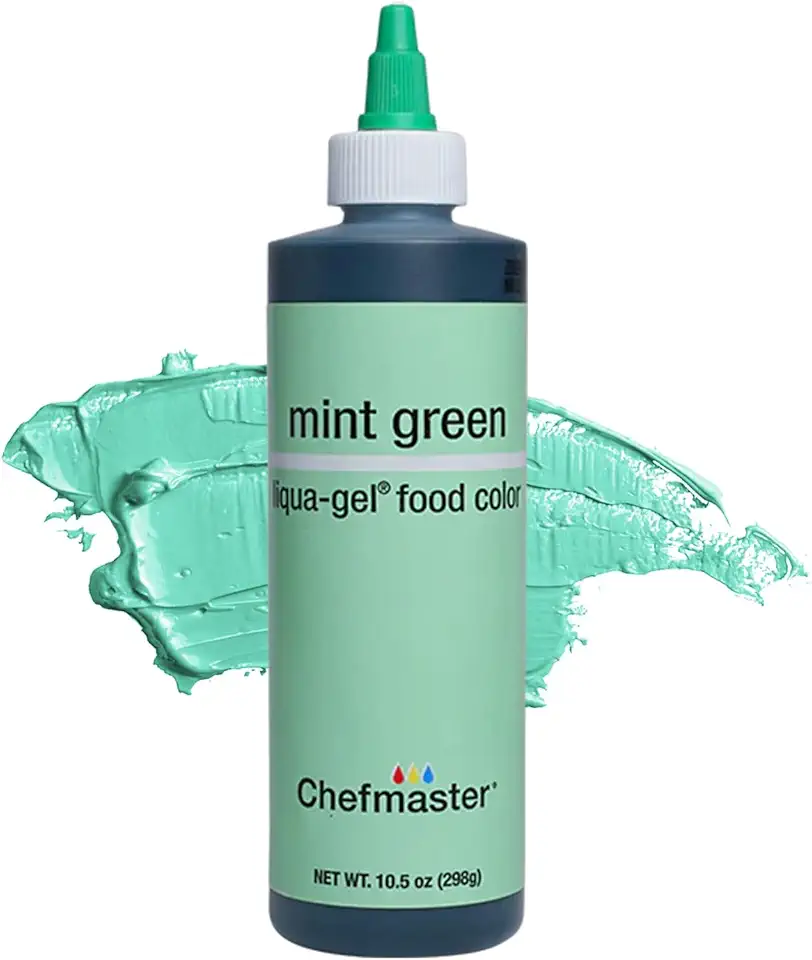 Chefmaster Mint Green Liqua-Gel® Food Coloring | Vibrant Color | Professional-Grade Dye for Icing, Frosting, Fondant | Baking & Decorating | Fade-Resistant | Easy-to-Use | Made in USA | 10.5 oz
$14.50
View details
Chefmaster Mint Green Liqua-Gel® Food Coloring | Vibrant Color | Professional-Grade Dye for Icing, Frosting, Fondant | Baking & Decorating | Fade-Resistant | Easy-to-Use | Made in USA | 10.5 oz
$14.50
View details
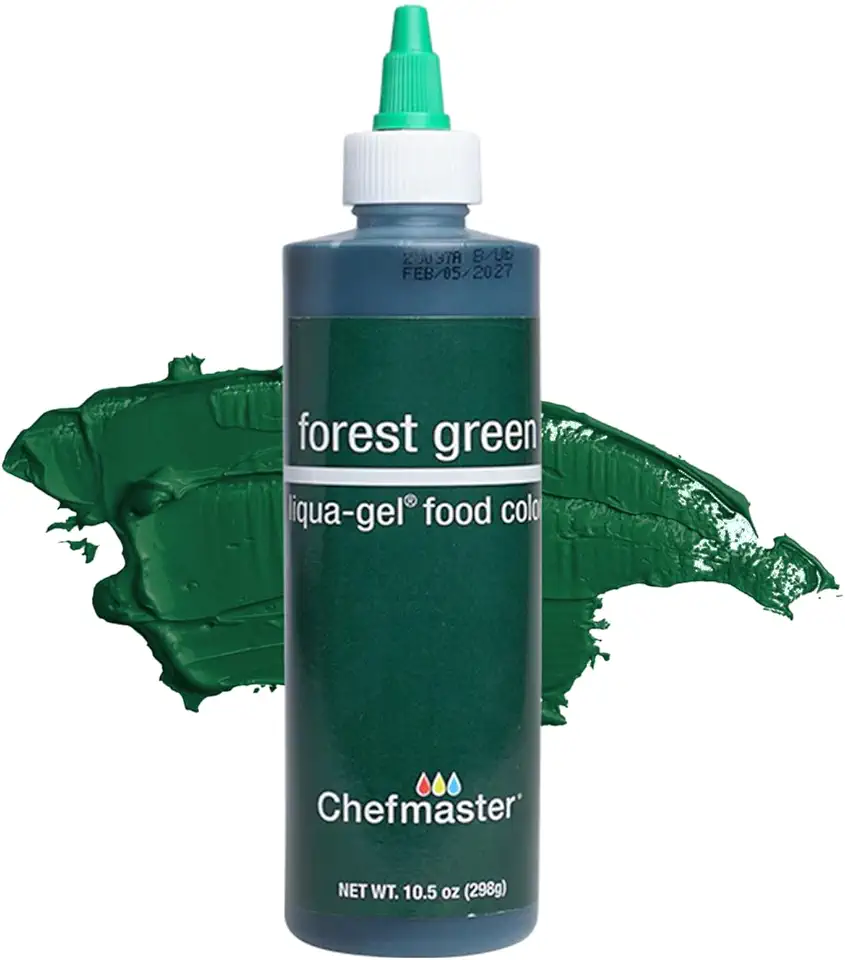 Chefmaster Forest Green Liqua-Gel® Food Coloring | Vibrant Color | Professional-Grade Dye for Icing, Frosting, Fondant | Baking & Decorating | Fade-Resistant | Easy-to-Use | Made in USA | 10.5 oz
$12.79
View details
Prime
Chefmaster Forest Green Liqua-Gel® Food Coloring | Vibrant Color | Professional-Grade Dye for Icing, Frosting, Fondant | Baking & Decorating | Fade-Resistant | Easy-to-Use | Made in USA | 10.5 oz
$12.79
View details
Prime
 Watkins Assorted Food Coloring, 1 Each Red, Yellow, Green, Blue, Total Four .3 oz bottles
$6.99
$12.99
View details
best seller
Watkins Assorted Food Coloring, 1 Each Red, Yellow, Green, Blue, Total Four .3 oz bottles
$6.99
$12.99
View details
best seller
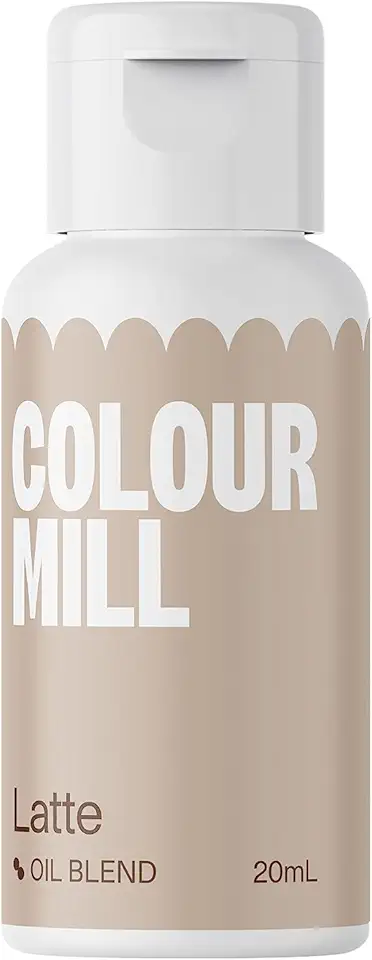 Colour Mill Oil-Based Food Coloring, 20 Milliliters Latte
$9.99
View details
Colour Mill Oil-Based Food Coloring, 20 Milliliters Latte
$9.99
View details
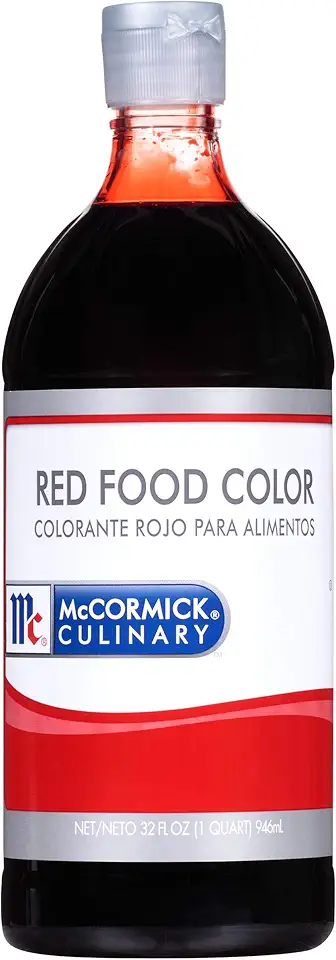 McCormick Culinary Red Food Coloring, 32 fl oz - One 32 Fluid Ounce Bottle of Red Food Dye With Rich Red Color Perfect for Red Velvet Cakes, Frosting, Icing, Cookies and More
$13.99
View details
Prime
McCormick Culinary Red Food Coloring, 32 fl oz - One 32 Fluid Ounce Bottle of Red Food Dye With Rich Red Color Perfect for Red Velvet Cakes, Frosting, Icing, Cookies and More
$13.99
View details
Prime
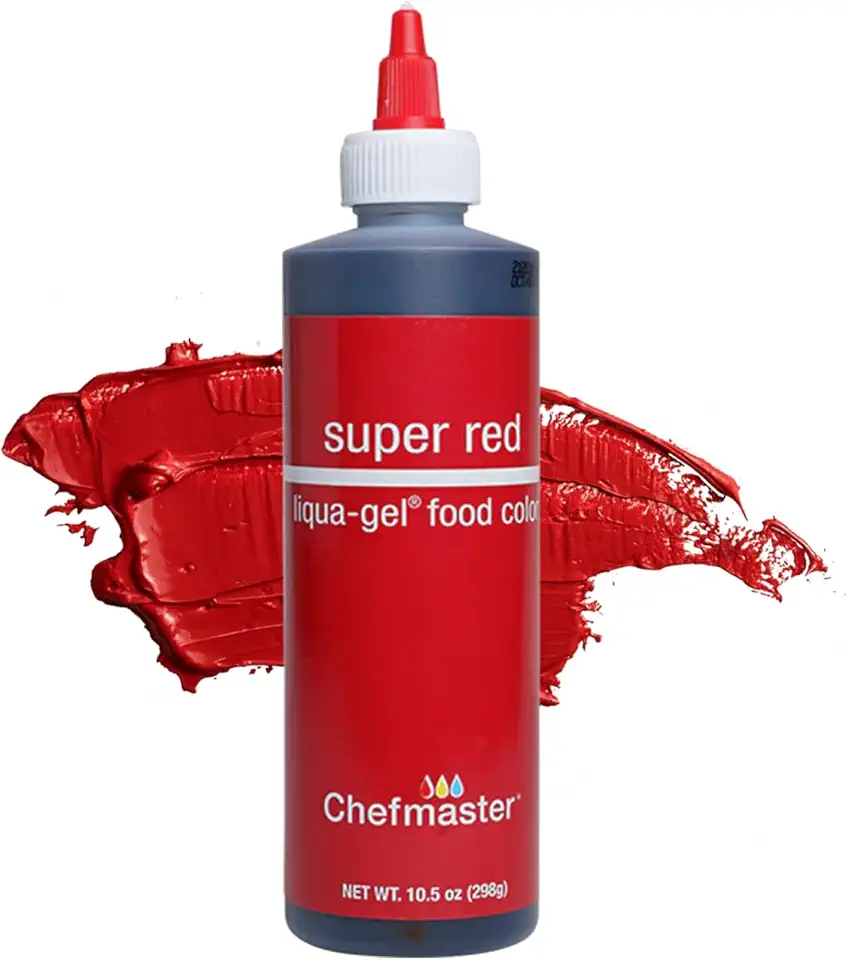 Chefmaster Super Red Liqua-Gel® Food Coloring | Vibrant Color | Professional-Grade Dye for Icing, Frosting, Fondant | Baking & Decorating | Fade-Resistant | Easy-to-Use | Made in USA | 10.5 oz
$11.96
$16.00
View details
Prime
Chefmaster Super Red Liqua-Gel® Food Coloring | Vibrant Color | Professional-Grade Dye for Icing, Frosting, Fondant | Baking & Decorating | Fade-Resistant | Easy-to-Use | Made in USA | 10.5 oz
$11.96
$16.00
View details
Prime
 Watkins Assorted Food Coloring, 1 Each Red, Yellow, Green, Blue, Total Four .3 oz bottles
$6.99
$12.99
View details
Watkins Assorted Food Coloring, 1 Each Red, Yellow, Green, Blue, Total Four .3 oz bottles
$6.99
$12.99
View details
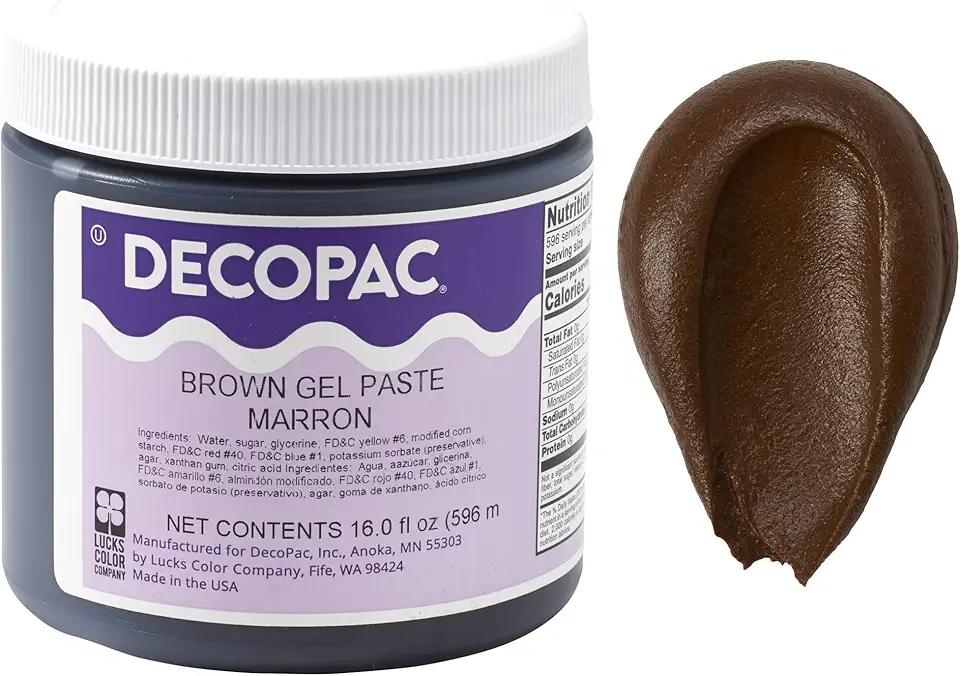 DecoPac Food Coloring | Paste Made In USA With Intense Colors, Food Color (Brown) 16oz Brown Food Coloring For Bakers
$29.99
View details
Prime
DecoPac Food Coloring | Paste Made In USA With Intense Colors, Food Color (Brown) 16oz Brown Food Coloring For Bakers
$29.99
View details
Prime
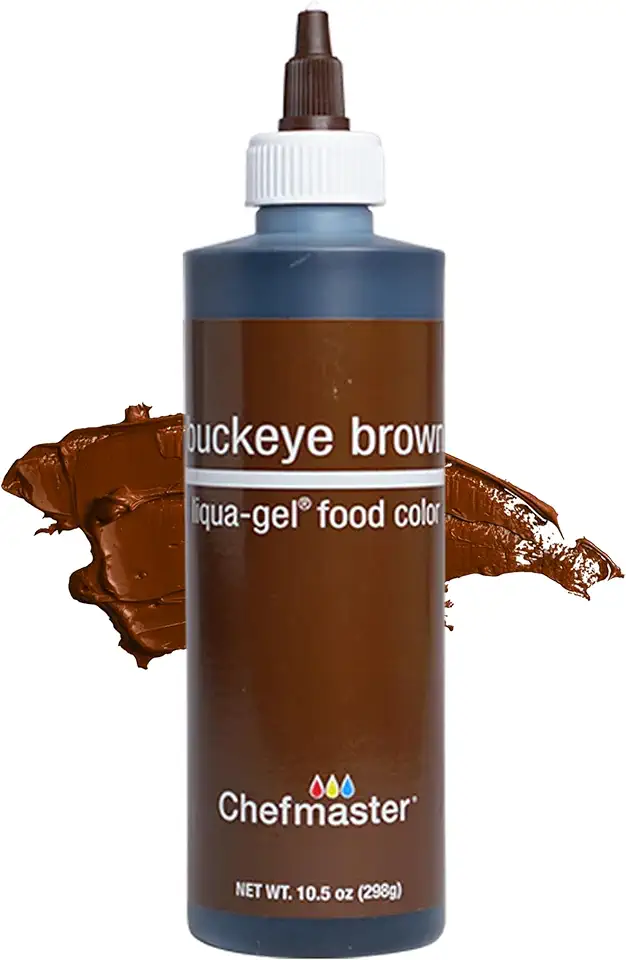 Chefmaster Buckeye Brown Liqua-Gel® Food Coloring | Vibrant Color | Professional-Grade Dye for Icing, Frosting, Fondant | Baking & Decorating | Fade-Resistant | Easy-to-Use | Made in USA | 10.5 oz
$12.67
View details
best seller
Chefmaster Buckeye Brown Liqua-Gel® Food Coloring | Vibrant Color | Professional-Grade Dye for Icing, Frosting, Fondant | Baking & Decorating | Fade-Resistant | Easy-to-Use | Made in USA | 10.5 oz
$12.67
View details
best seller
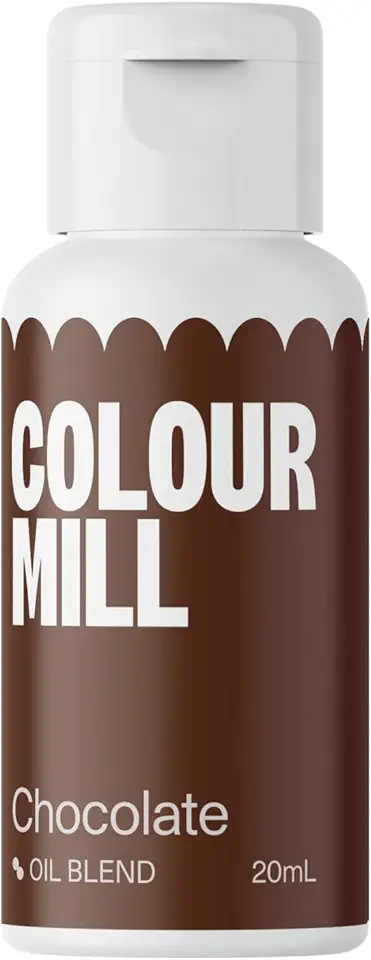 Colour Mill Oil-Based Food Coloring, 20 Milliliters Chocolate
$9.99
View details
Colour Mill Oil-Based Food Coloring, 20 Milliliters Chocolate
$9.99
View details
Tips for Painting
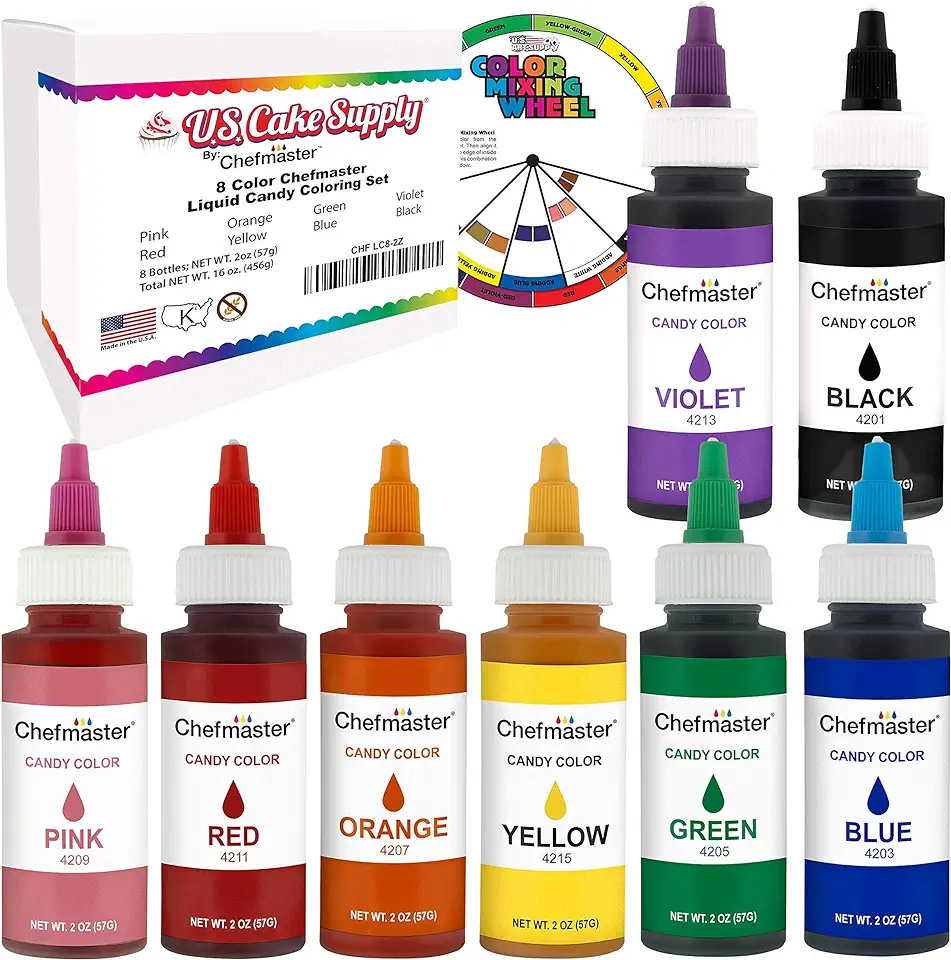 U.S. Cake Supply Large 2-ounce Bottles of each Liquid Candy Food Color 8 Bottle Kit with Mixing Wheel for Chocolate and Candy Coloring
$47.99
View details
U.S. Cake Supply Large 2-ounce Bottles of each Liquid Candy Food Color 8 Bottle Kit with Mixing Wheel for Chocolate and Candy Coloring
$47.99
View details
 Chefmaster Bakers Rose Liqua-Gel® Food Coloring | Vibrant Color | Professional-Grade Dye for Icing, Frosting, Fondant | Baking & Decorating | Fade-Resistant | Easy-to-Use | Made in USA | 10.5 oz
$14.10
View details
Prime
Chefmaster Bakers Rose Liqua-Gel® Food Coloring | Vibrant Color | Professional-Grade Dye for Icing, Frosting, Fondant | Baking & Decorating | Fade-Resistant | Easy-to-Use | Made in USA | 10.5 oz
$14.10
View details
Prime
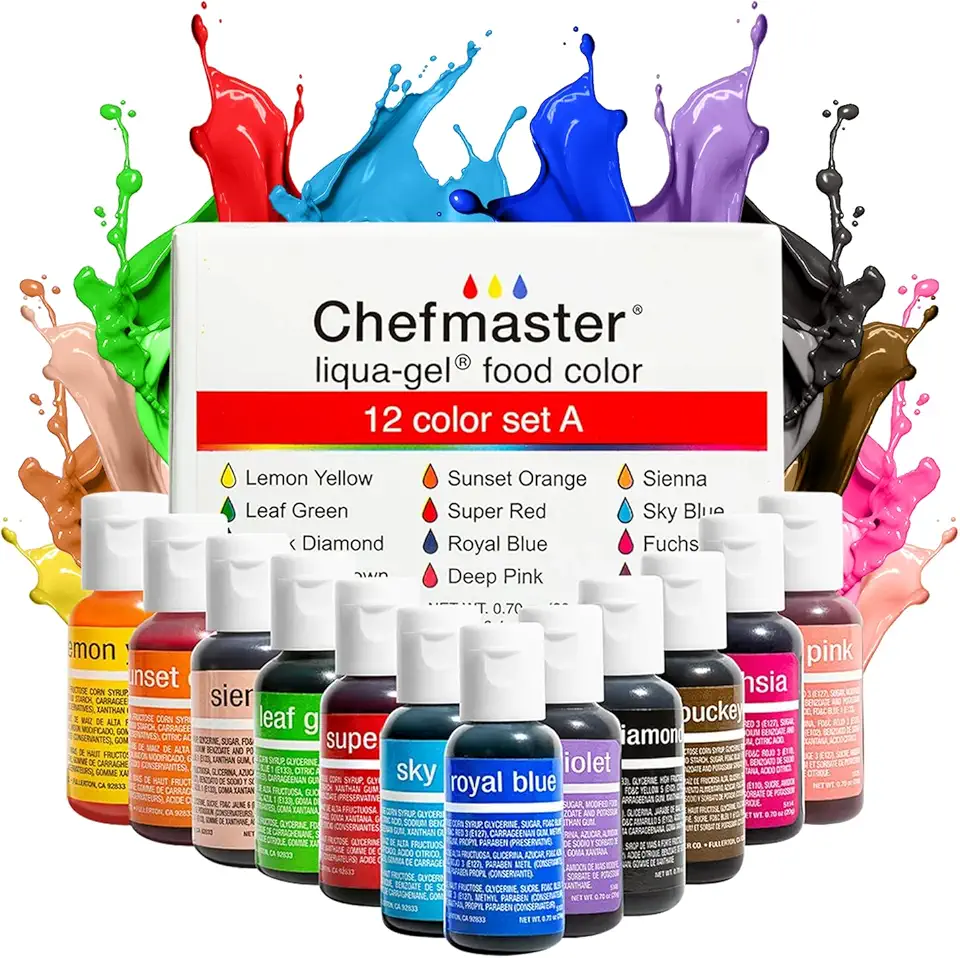 Chefmaster - Liqua-Gel Food Coloring - Fade Resistant Food Coloring - 12 Pack - Vibrant, Eye-Catching Colors, Easy-To-Blend Formula, Fade-Resistant
$22.00
View details
Chefmaster - Liqua-Gel Food Coloring - Fade Resistant Food Coloring - 12 Pack - Vibrant, Eye-Catching Colors, Easy-To-Blend Formula, Fade-Resistant
$22.00
View details
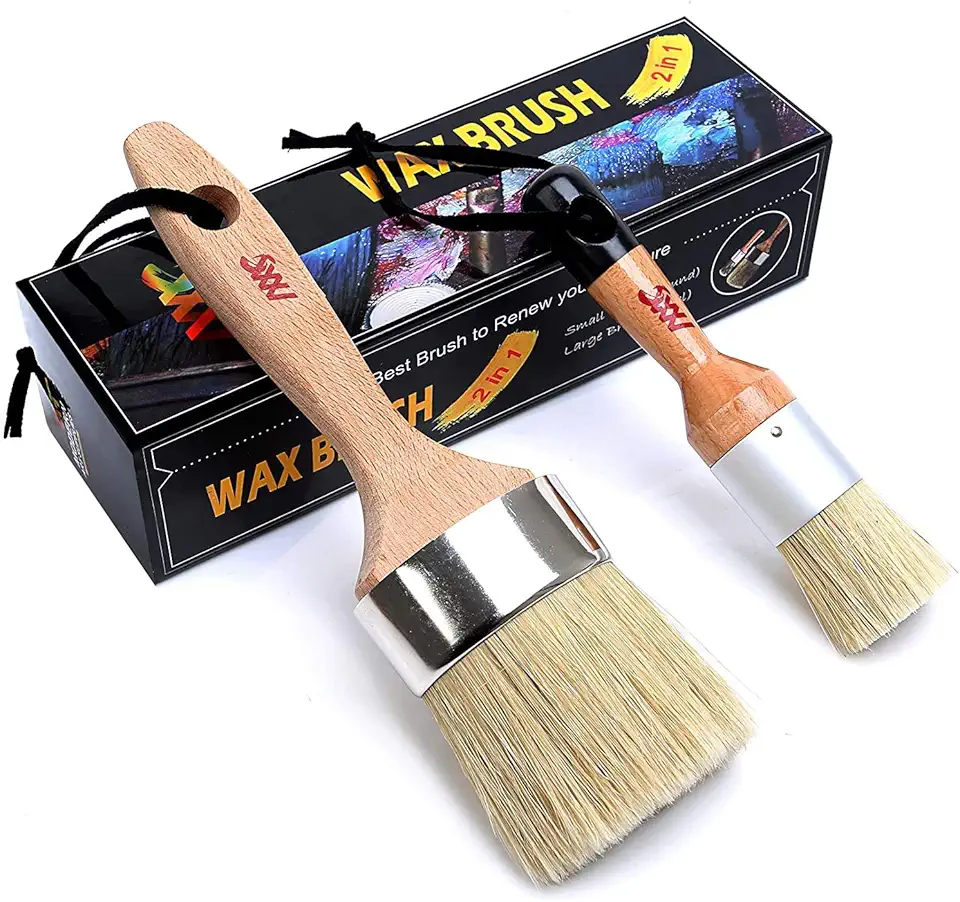 Chalk Paint Brushes Set, Pack of 2 Wax Brush - 2.5 Inches Large, Natural Bristles, Perfect for Furniture Painting, Stencils, Waxing - No Shedding, Superior Paint Pick-Up & Release
$14.97
$16.97
View details
best seller
Chalk Paint Brushes Set, Pack of 2 Wax Brush - 2.5 Inches Large, Natural Bristles, Perfect for Furniture Painting, Stencils, Waxing - No Shedding, Superior Paint Pick-Up & Release
$14.97
$16.97
View details
best seller
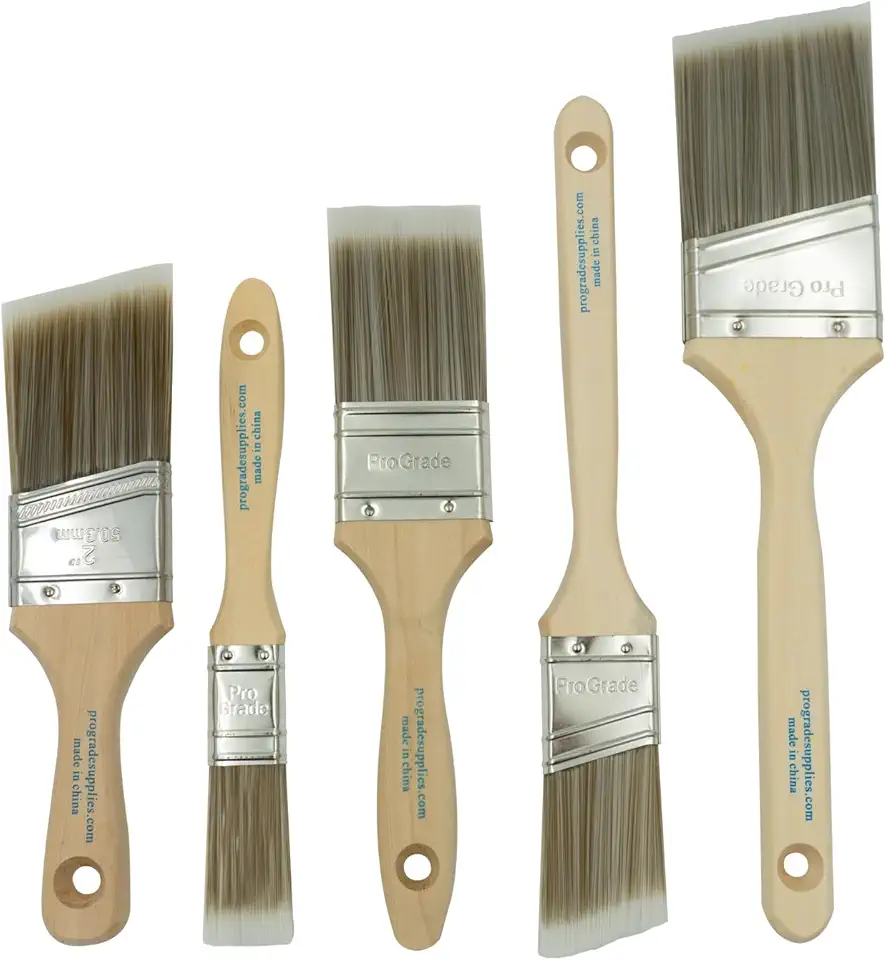 Pro Grade, Paint Brushes, 5-Piece, Paint Brush Set: Flat & Angle Brushes for Latex and Oil Paints, Stains, Interior & Exterior Home Improvement
$7.99
$11.99
View details
Pro Grade, Paint Brushes, 5-Piece, Paint Brush Set: Flat & Angle Brushes for Latex and Oil Paints, Stains, Interior & Exterior Home Improvement
$7.99
$11.99
View details
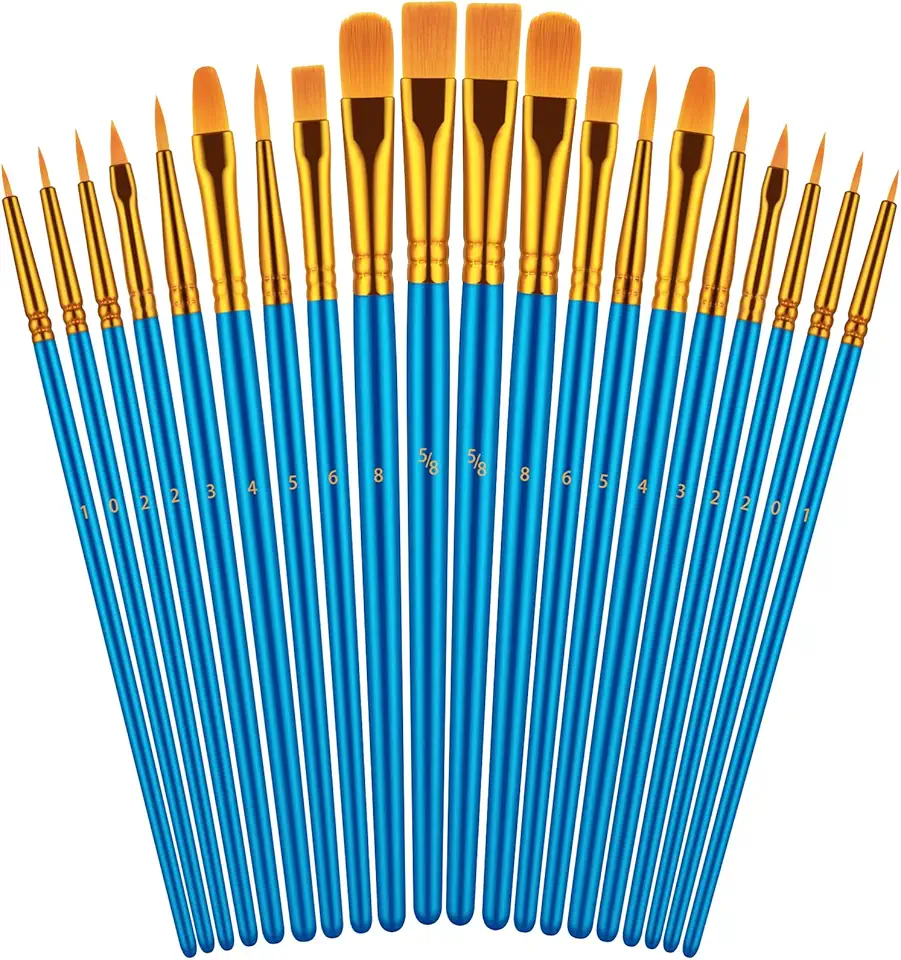 Paint Brushes Set for Acrylic Painting, 20 Pcs Oil Watercolor Acrylic Paint Brush, Artist Paintbrushes for Body Face Rock Canvas, Kids Adult Drawing Arts Crafts Supplies, Blue
$7.99
$8.99
View details
Paint Brushes Set for Acrylic Painting, 20 Pcs Oil Watercolor Acrylic Paint Brush, Artist Paintbrushes for Body Face Rock Canvas, Kids Adult Drawing Arts Crafts Supplies, Blue
$7.99
$8.99
View details
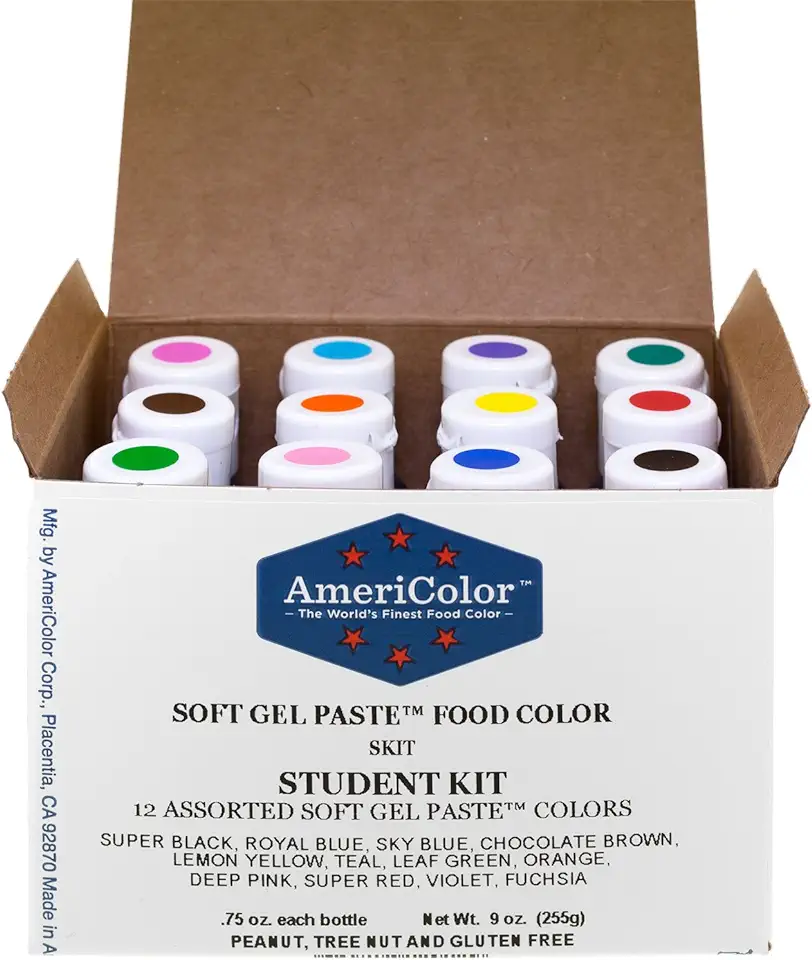 Food Coloring AmeriColor Student - Kit 12 .75 Ounce Bottles Soft Gel Paste Colors
$32.25
View details
Prime
Food Coloring AmeriColor Student - Kit 12 .75 Ounce Bottles Soft Gel Paste Colors
$32.25
View details
Prime
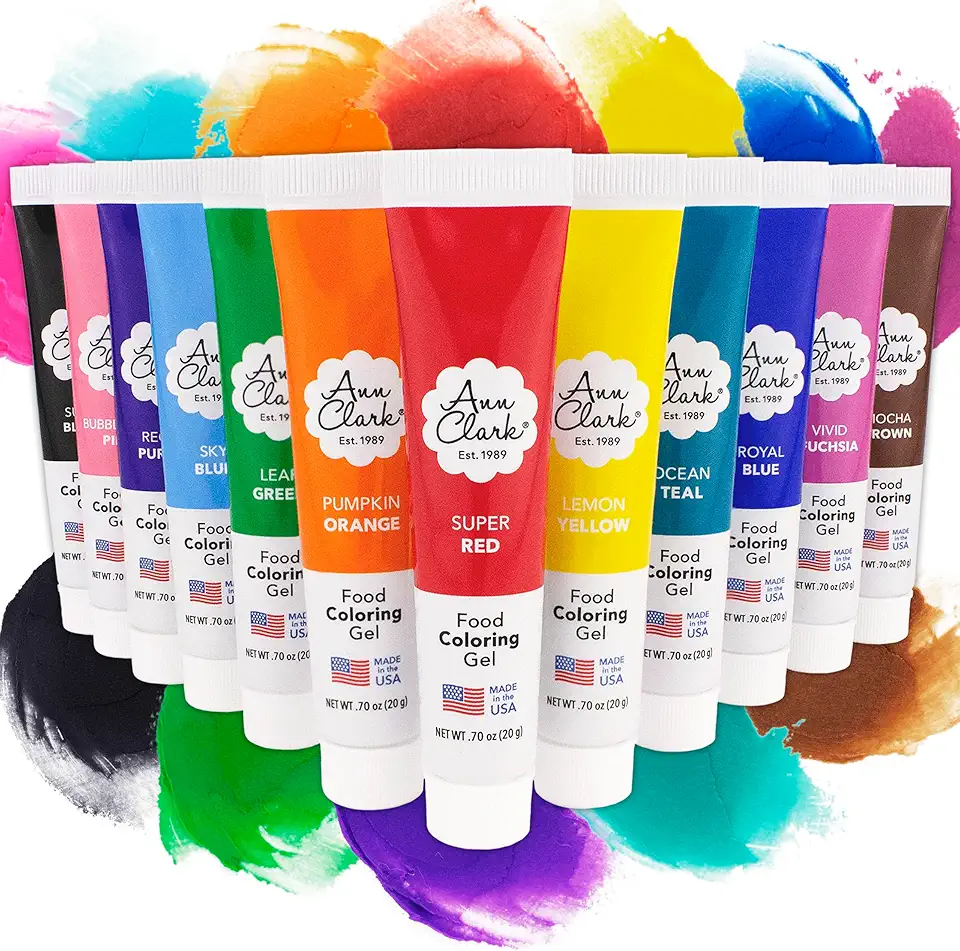 Ann Clark Professional-Grade Gel Food Coloring Made in USA .7 oz, 12 Colors
$24.99
View details
Prime
Ann Clark Professional-Grade Gel Food Coloring Made in USA .7 oz, 12 Colors
$24.99
View details
Prime
 McCormick Culinary Red Food Coloring, 32 fl oz - One 32 Fluid Ounce Bottle of Red Food Dye With Rich Red Color Perfect for Red Velvet Cakes, Frosting, Icing, Cookies and More
$13.99
View details
McCormick Culinary Red Food Coloring, 32 fl oz - One 32 Fluid Ounce Bottle of Red Food Dye With Rich Red Color Perfect for Red Velvet Cakes, Frosting, Icing, Cookies and More
$13.99
View details
Instructions
Step 1
Begin by painting the closest stems using the first color palette combination, which is Yellow + Green.
For the distant stems, use the fifth color palette, which consists of Brown.
Step 2
Apply the third palette for the first layer of color, making it transparent.
For the second layer, use a saturated version of that color to achieve depth.
Step 3
When painting the bow, use the fifth color palette in a transparent application for a delicate look.
Step 4
Paint the leaves and additional stems layer by layer, starting with transparent layers and gradually adding more saturation.
Step 5
Use the third palette to apply deep shadows that add dimension to your painting.
Step 6
Finally, to finalize the details, use the sixth palette with a fine brush for the darkest accents.
Servings
When it comes to serving your watercolor cake, consider these delightful suggestions:
For a **charming picnic**, slice the cake into small, manageable pieces and serve them on decorative plates. Pair with a refreshing beverage, like lemonade or iced tea, to enhance the experience. 😋
**Host a dinner party** where this cake can be the star of the show. Serve it alongside other desserts for an enchanting dessert table that will leave your guests in awe. 🎉
Want to make it even more special? Consider adding some fresh flowers or small sprigs of herbs as a garnish. This adds a lovely touch and speaks volumes about your creativity. 🌿
Equipment
Choose a squirrel or synthetic brush for smooth application. A soft touch will help blend colors seamlessly.
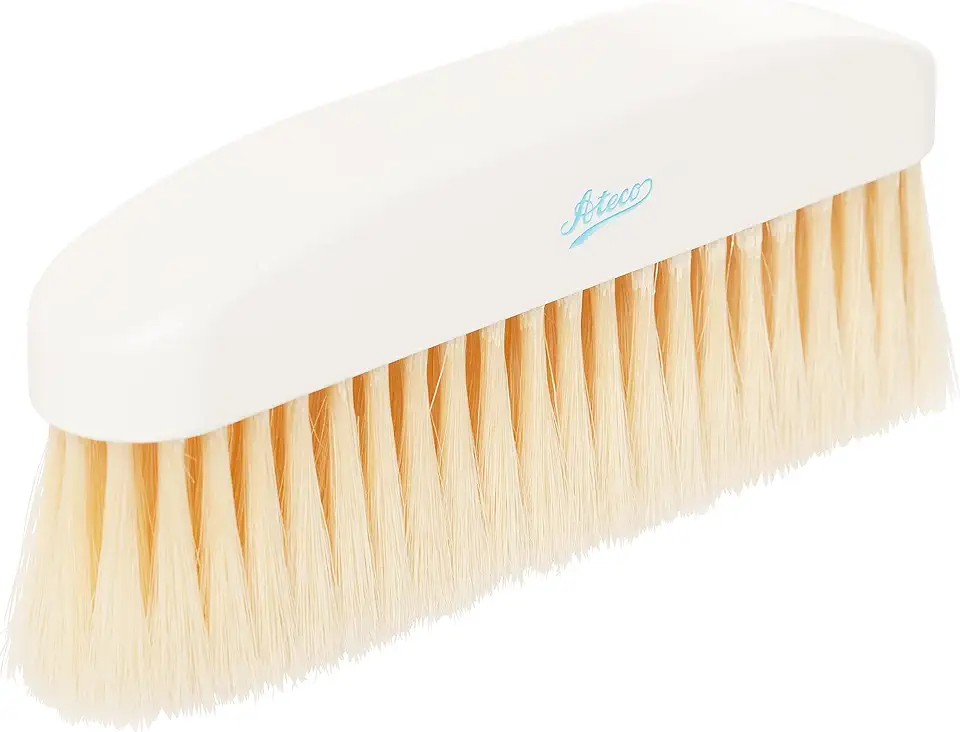 Ateco Bench Brush, 1 3/4 x 9 1/2-Inch Head with Natural White Boar Bristles & Molded Plastic Handle
$75.74
View details
Ateco Bench Brush, 1 3/4 x 9 1/2-Inch Head with Natural White Boar Bristles & Molded Plastic Handle
$75.74
View details
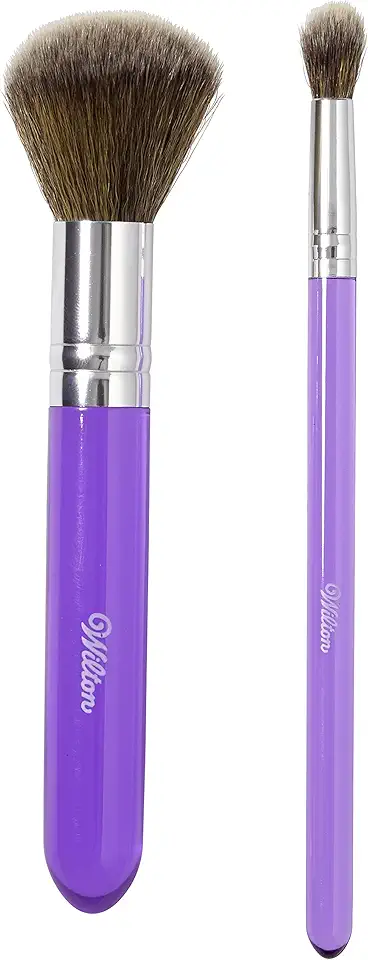 Wilton 2-Piece Dusting Brush Set - Apply Color Accent to Cakes with These two Brushes for Cake Decorating, Soft & Easy-To-Clean Baking Brushes
$12.19
$15.26
View details
Prime
best seller
Wilton 2-Piece Dusting Brush Set - Apply Color Accent to Cakes with These two Brushes for Cake Decorating, Soft & Easy-To-Clean Baking Brushes
$12.19
$15.26
View details
Prime
best seller
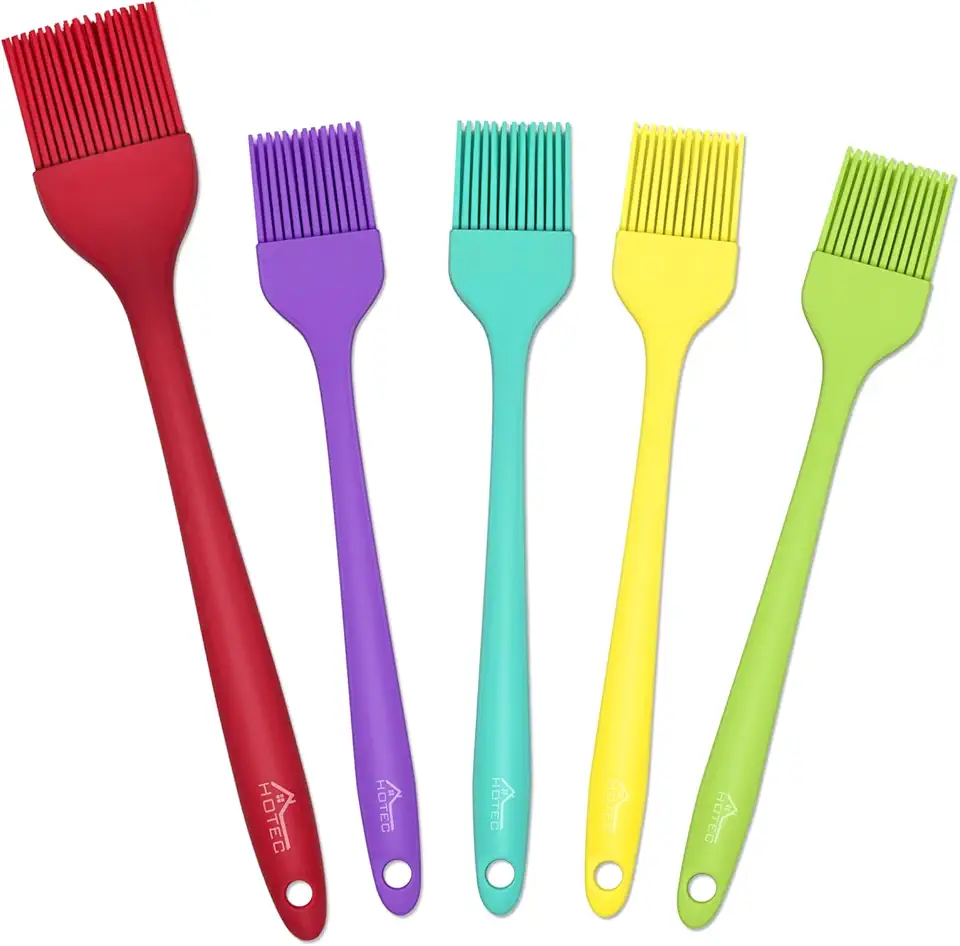 HOTEC Silicone Heat Resistant Marinading Meat Grill Basting Pastry Brush for Oil Butter Sauce Sausages Desserts Turkey Baster Grill Barbecue, Multicolor
$9.99
View details
HOTEC Silicone Heat Resistant Marinading Meat Grill Basting Pastry Brush for Oil Butter Sauce Sausages Desserts Turkey Baster Grill Barbecue, Multicolor
$9.99
View details
Any food coloring will work, but remember to dilute it with vodka or a mixture of water and alcohol for better results!
 Food Coloring AmeriColor Student - Kit 12 .75 Ounce Bottles Soft Gel Paste Colors
$32.25
View details
Prime
Food Coloring AmeriColor Student - Kit 12 .75 Ounce Bottles Soft Gel Paste Colors
$32.25
View details
Prime
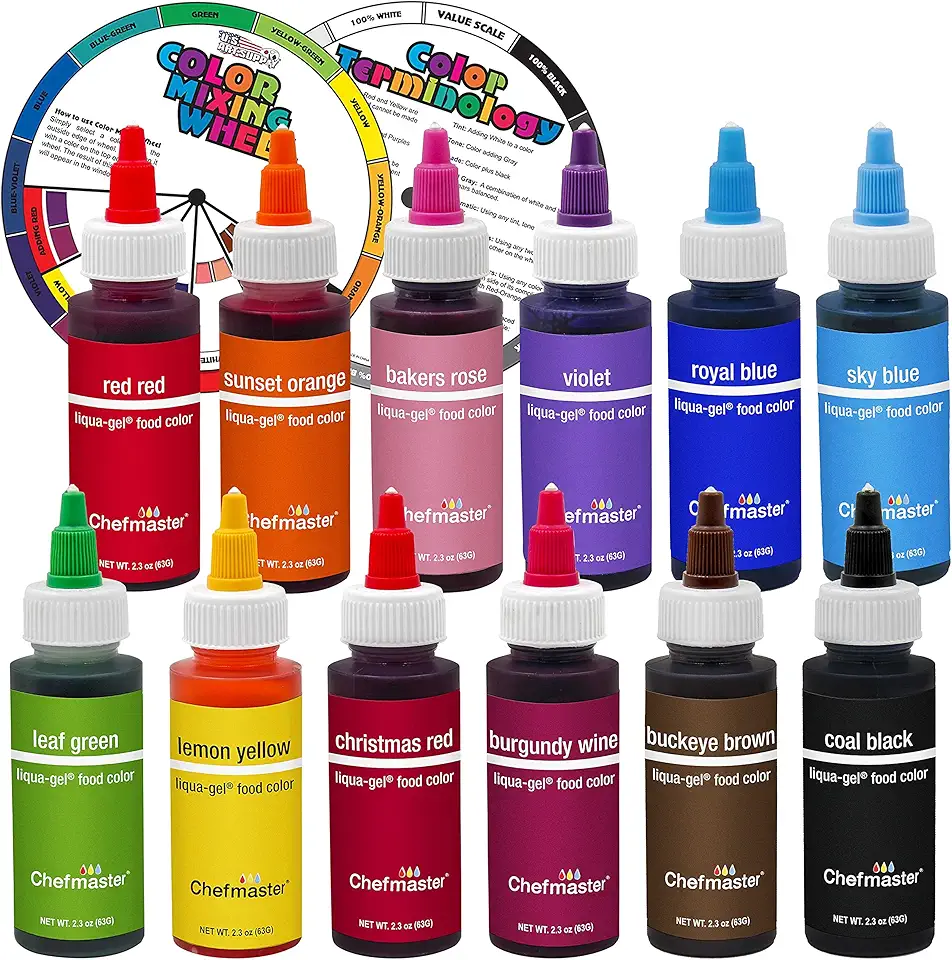 12 Food Color U.S. Cake Supply 2.3-Ounce Liqua-Gel Cake Food Coloring Variety Pack with Color Mixing Wheel - Made in the U.S.A.
$60.99
View details
Prime
12 Food Color U.S. Cake Supply 2.3-Ounce Liqua-Gel Cake Food Coloring Variety Pack with Color Mixing Wheel - Made in the U.S.A.
$60.99
View details
Prime
 Ann Clark Professional-Grade Gel Food Coloring Made in USA .7 oz, 12 Colors
$24.99
View details
Ann Clark Professional-Grade Gel Food Coloring Made in USA .7 oz, 12 Colors
$24.99
View details
A simple kitchen plate or a color palette will suffice for mixing your colors.
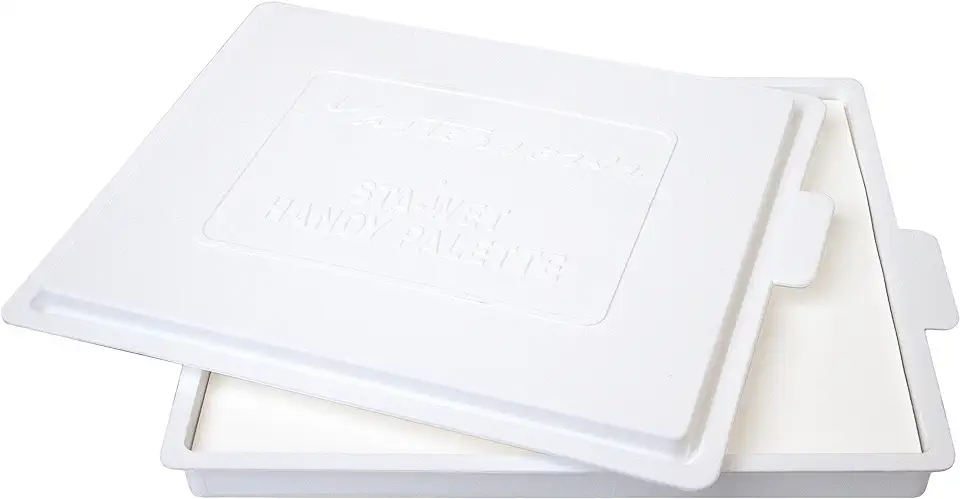 Masterson Sta-Wet Handy Palette, 8.5in x 7in Airtight Stay Wet Palette, Keeps Wet Paint Fresh for Days, Acrylic Painting Palette with Lid, Seal, Perfect for Miniature Painting, Made in USA
$14.29
View details
Masterson Sta-Wet Handy Palette, 8.5in x 7in Airtight Stay Wet Palette, Keeps Wet Paint Fresh for Days, Acrylic Painting Palette with Lid, Seal, Perfect for Miniature Painting, Made in USA
$14.29
View details
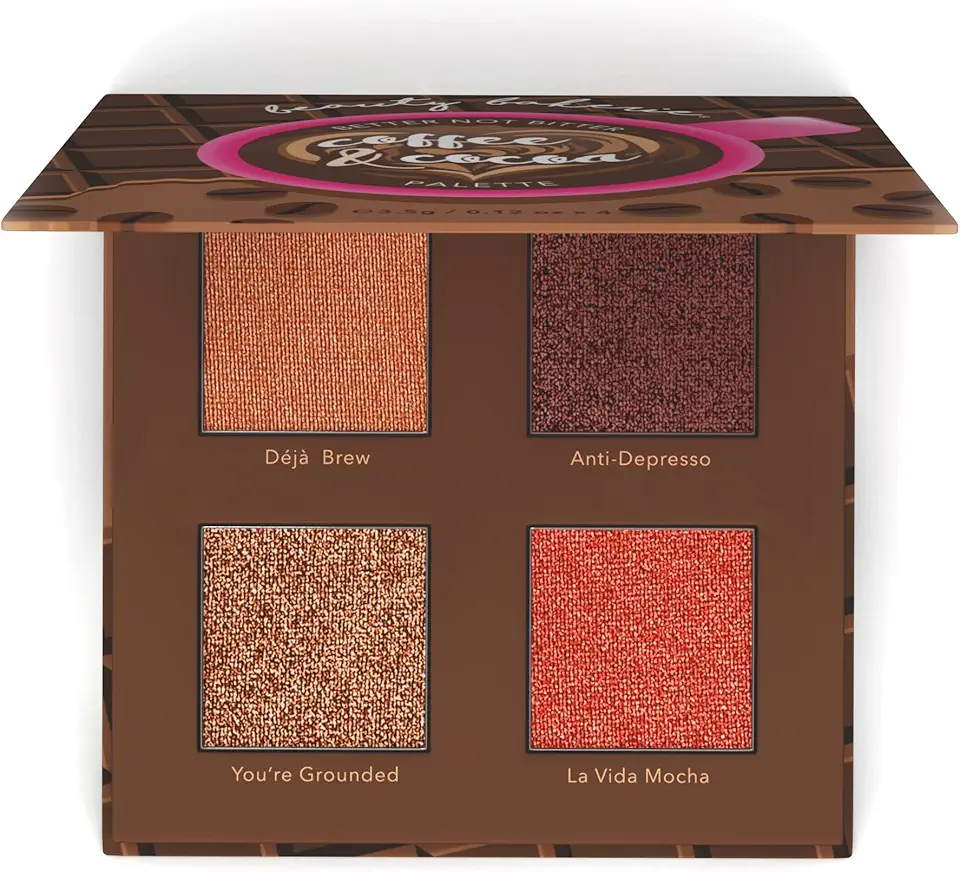 Beauty Bakerie Coffee & Cocoa Palette, Versatile Blush and Bronzer Powder Palette for Every Skin Tone, Creamy Satin Finish, 4 Sugary Shades, Highlight, Contour, Blush Kit for Women
$38.00
View details
Beauty Bakerie Coffee & Cocoa Palette, Versatile Blush and Bronzer Powder Palette for Every Skin Tone, Creamy Satin Finish, 4 Sugary Shades, Highlight, Contour, Blush Kit for Women
$38.00
View details
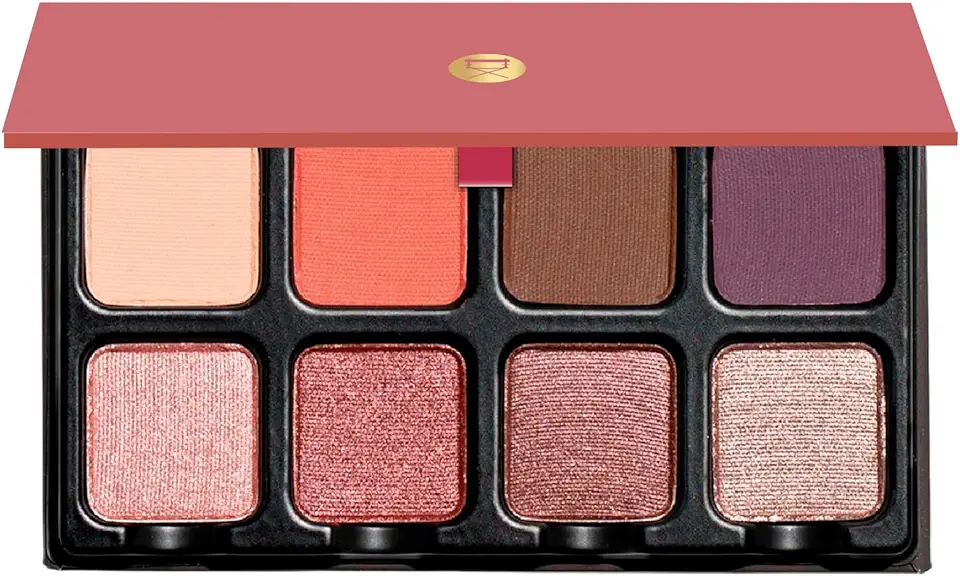 Viseart Paris Petit Pro Luxe Makeup Eyeshadow Palette (Deux)
$30.00
View details
Viseart Paris Petit Pro Luxe Makeup Eyeshadow Palette (Deux)
$30.00
View details
Your cake should be freshly frosted and chilled, providing the perfect canvas for your beautiful design.
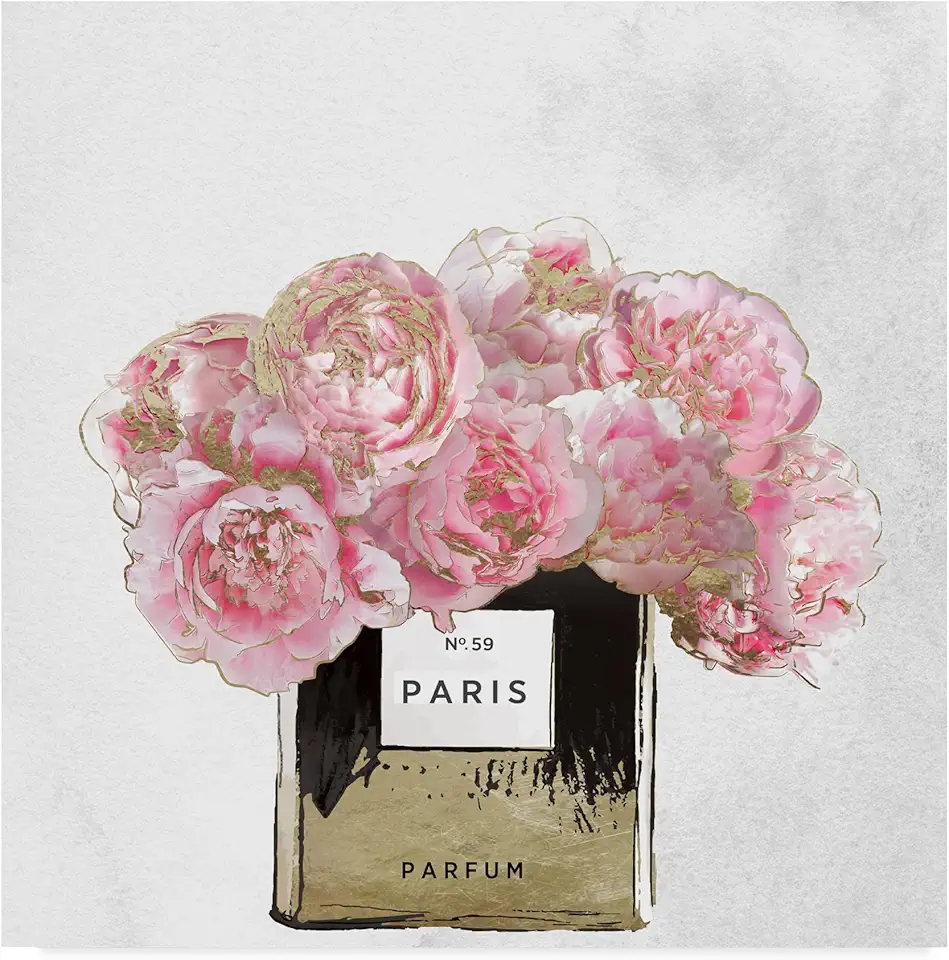 Color Bakery 'Pink Scented' Canvas Art
$68.54
$99.99
View details
Color Bakery 'Pink Scented' Canvas Art
$68.54
$99.99
View details
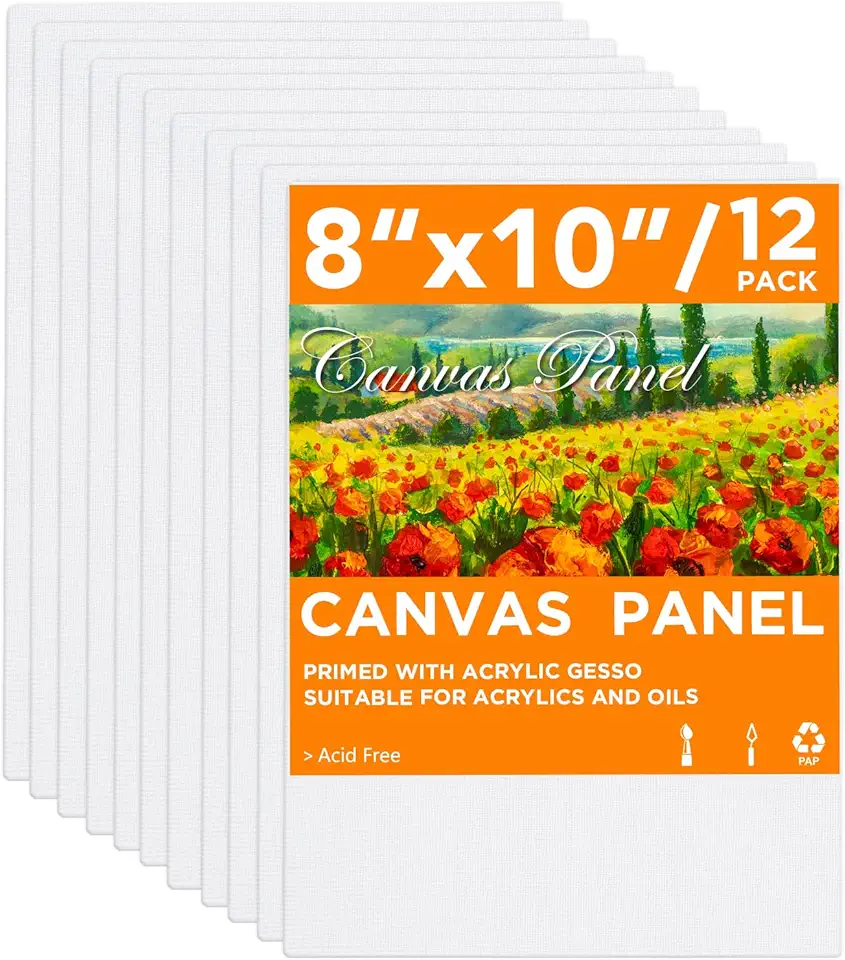 CONDA Canvas Boards for Painting, 8 x 10 inch, 12 Pack, 100% Cotton Canvas Panels, White Blank Canvases, Primed, Acid-Free, Artist Quality for Acrylic, Pouring Watercolor & Oil Painting
$9.99
$11.99
View details
CONDA Canvas Boards for Painting, 8 x 10 inch, 12 Pack, 100% Cotton Canvas Panels, White Blank Canvases, Primed, Acid-Free, Artist Quality for Acrylic, Pouring Watercolor & Oil Painting
$9.99
$11.99
View details
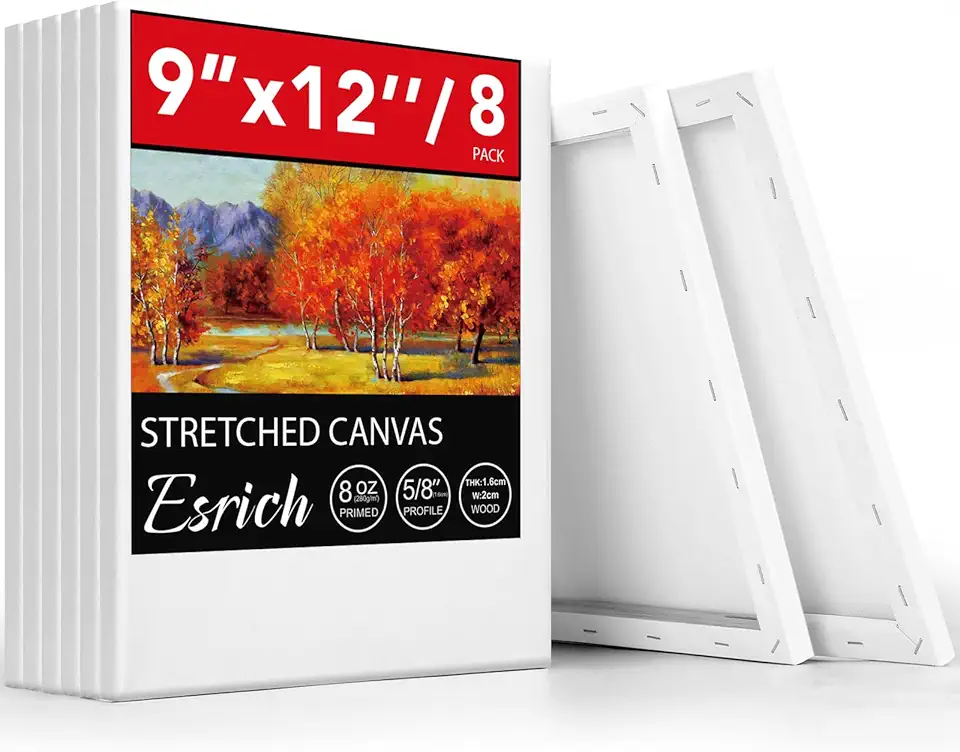 ESRICH Stretched Canvas for Painting, 8 Pack 9x12 Inch Canvas Value Pack,Primed Acid-Free Cotton Blank Canvases, Painting Canvas for Oil & Acrylic Paint.
$19.99
$21.99
View details
ESRICH Stretched Canvas for Painting, 8 Pack 9x12 Inch Canvas Value Pack,Primed Acid-Free Cotton Blank Canvases, Painting Canvas for Oil & Acrylic Paint.
$19.99
$21.99
View details
Variations
If you're looking to make this recipe more inclusive, check out these **gluten-free and vegan options**:
For a **gluten-free cake**, simply substitute all-purpose flour with almond flour or a gluten-free flour blend. This will ensure that everyone can enjoy your masterpiece without worry! 🌾❌
To create a **vegan version**, replace eggs with a flaxseed egg (1 tablespoon of ground flaxseed mixed with 2.5 tablespoons of water) and use a plant-based butter substitute. You'll still achieve the desired texture and taste without any animal products. 🌱
Faq
- What should I do if my colors aren't blending well?
Make sure you're using the right consistency of your food coloring—too thick, and it'll stay put; too watery, and it won't hold a shape. A little practice goes a long way!
- Can I use gel food coloring instead of liquid?
Yes! Gel food coloring is great for vibrant colors; just dilute it properly to get the right consistency for painting.
- How do I prevent my cake from sliding when decorating?
Make sure your cake is chilled and has a good layer of frosting that acts as “glue” for the coloring. A frosty surface helps stabilize the decoration.
- Is it essential to use vodka for diluting the colors?
While vodka is ideal due to its quick evaporation, you can substitute it with lemon extract or even water if needed. Just note that drying might take a bit longer!
- What's the best way to achieve deep shadows in my painting?
Layer your colors! Start with a light wash and gradually add layers for deeper tones. This technique gives your artwork more dimension.
- How can I make my cake design more intricate?
Experiment with different brush strokes and layering techniques. Practice on parchment paper first so you can freestyle on your cake confidently!

